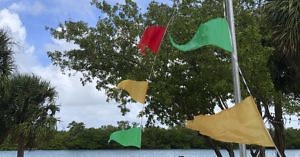Kaizen and the art of improving CAR-T cell performance
Next generation CAR-T cell products are likely to be all the rage soon as companies seek enhanced performance of their agents, not just in terms of safety and manufacturing times, but also with regards to long term outcomes for people with various hematologic malignancies.
The various changes being made are not the same since companies in this niche all seek an edge by evaluating different strategies.

Time to wave the flag on traditional CARs and move onto next gen products?
In part one of this mini-series, we explored some of the improvements being investigated with allogeneic CAR-T cell therapy and now it’s the turn of autologous approaches to be put in the spotlight.
It’s easy to think faster manufacturing is all the rage in order to compete with off-the shelf products whether CARs or T cell engagers, but actually the changes being implemented are much more extensive and wide ranging than this.
Here, we turn our attention and offer an in depth look at what’s behind these novel developments and why they matter through the lens of not only the data presented at ASH, but also an expert interview…
BSB subscribers can read up on our ongoing commentary and analysis from the ASH annual meeting – you can either log-in or click to access the back story behind the latest innovations.
This content is restricted to subscribers